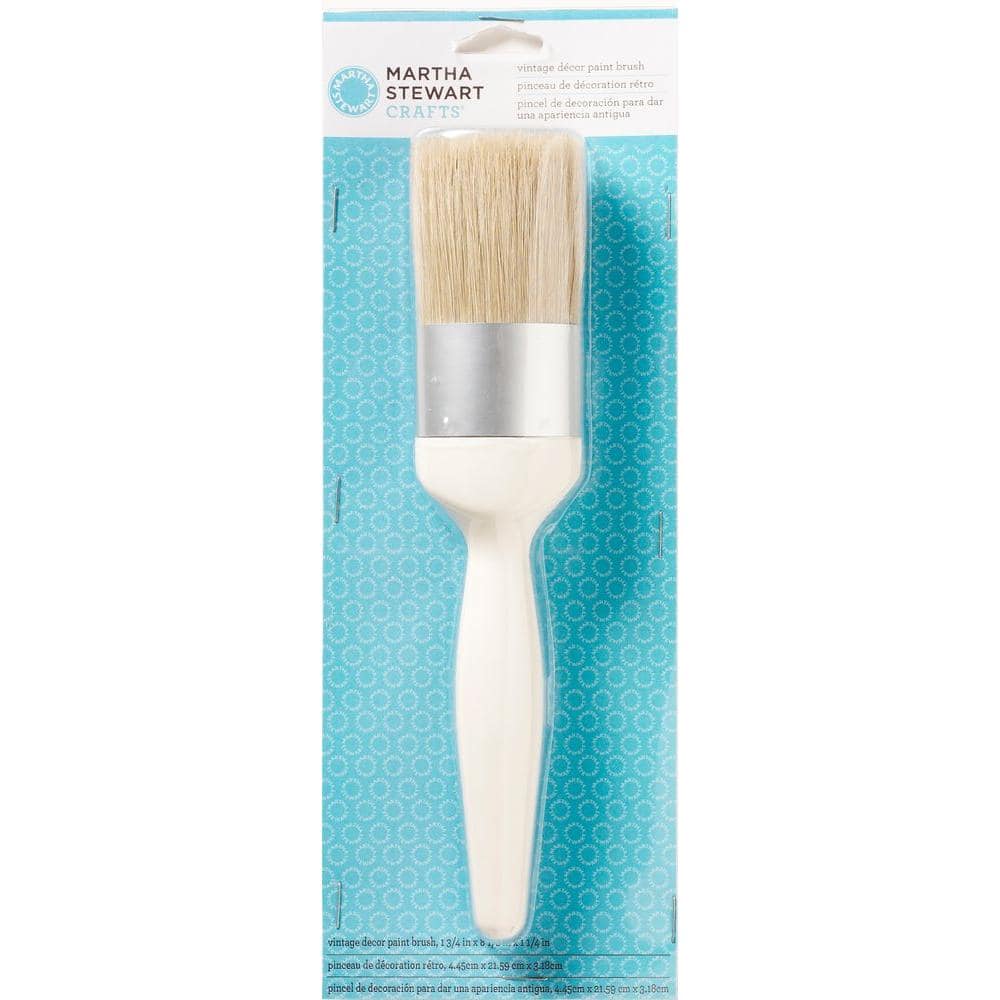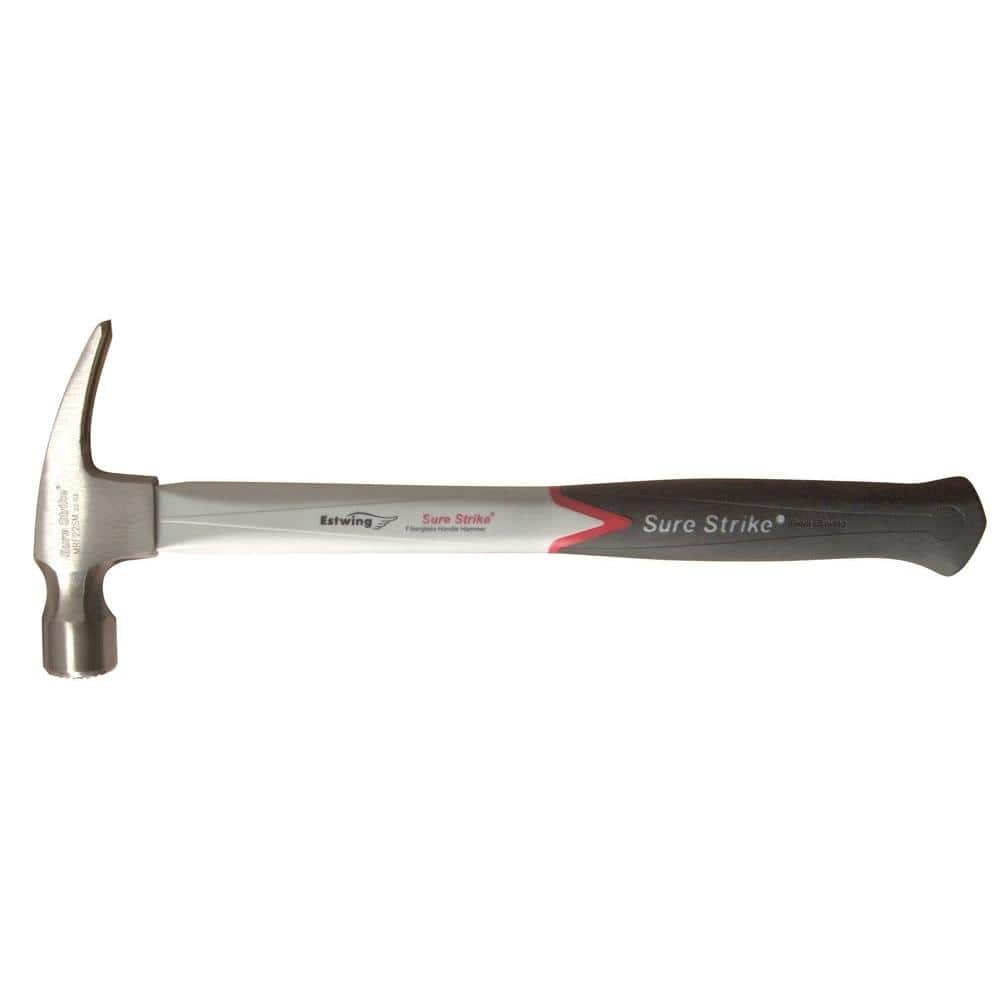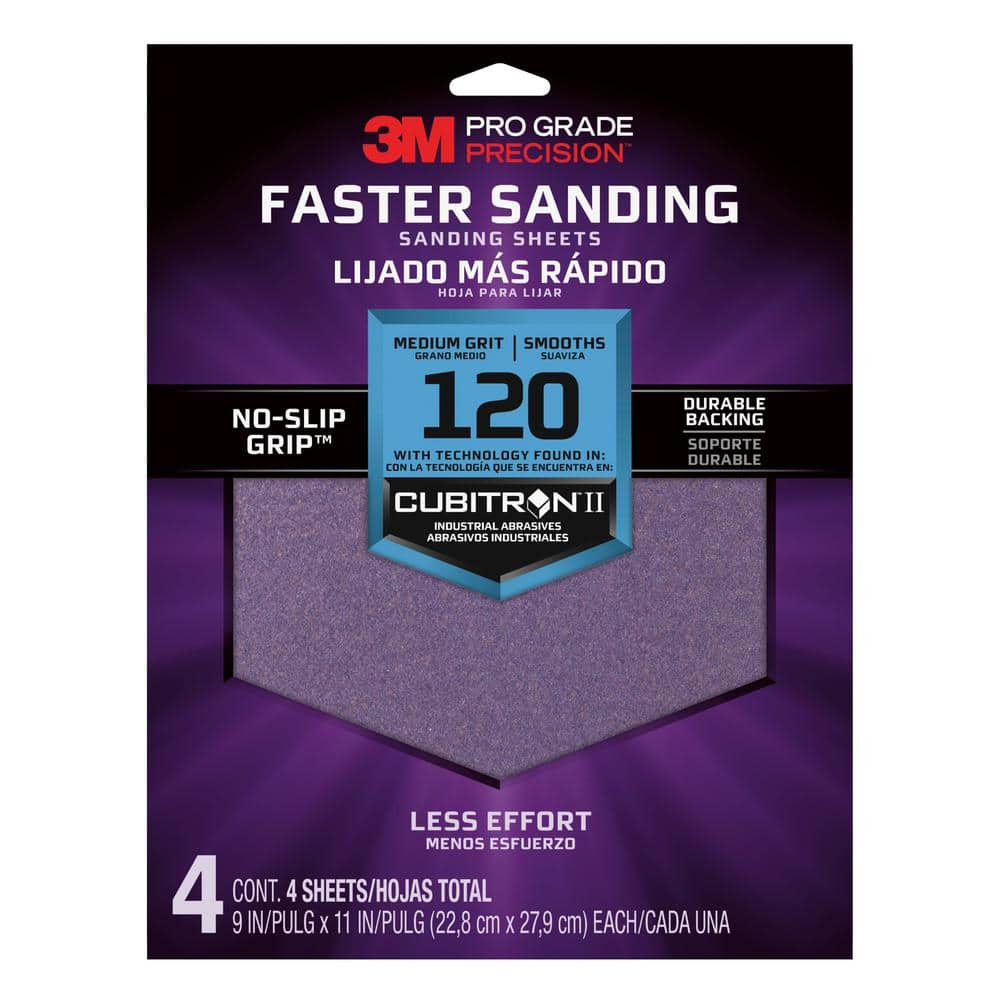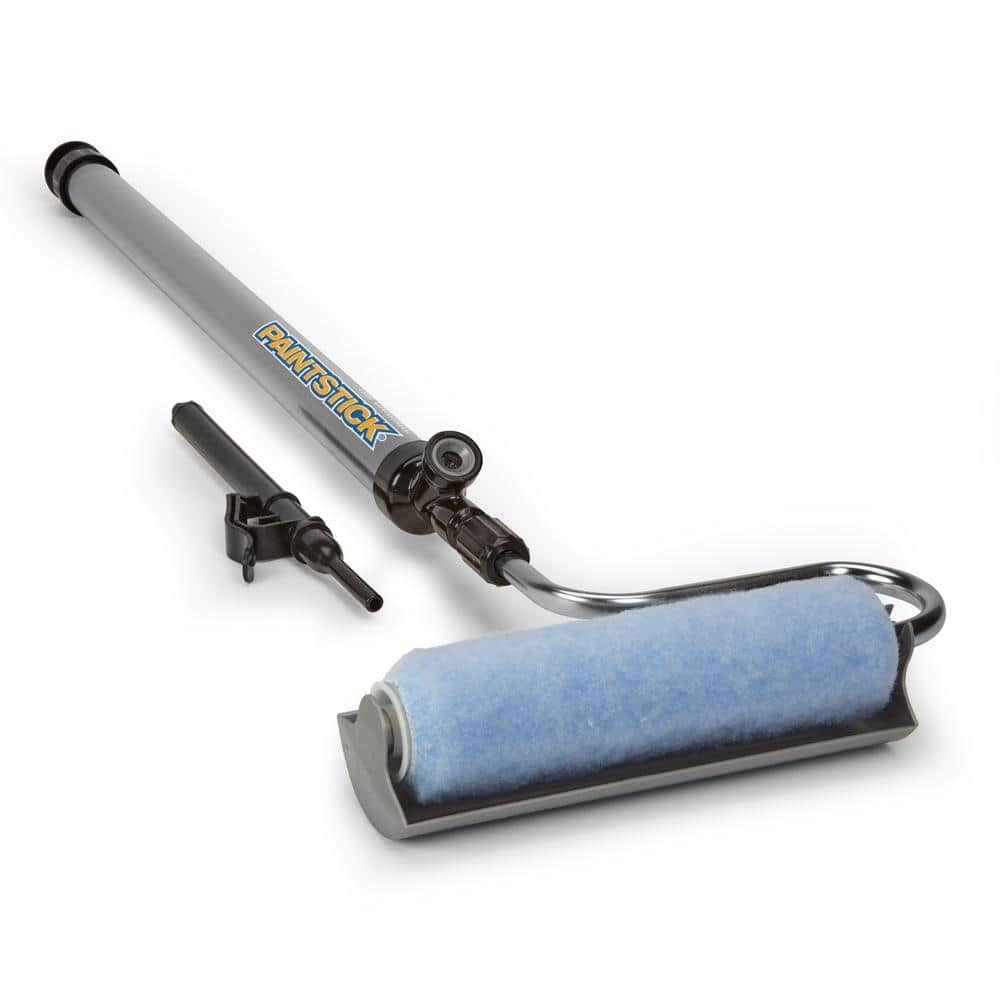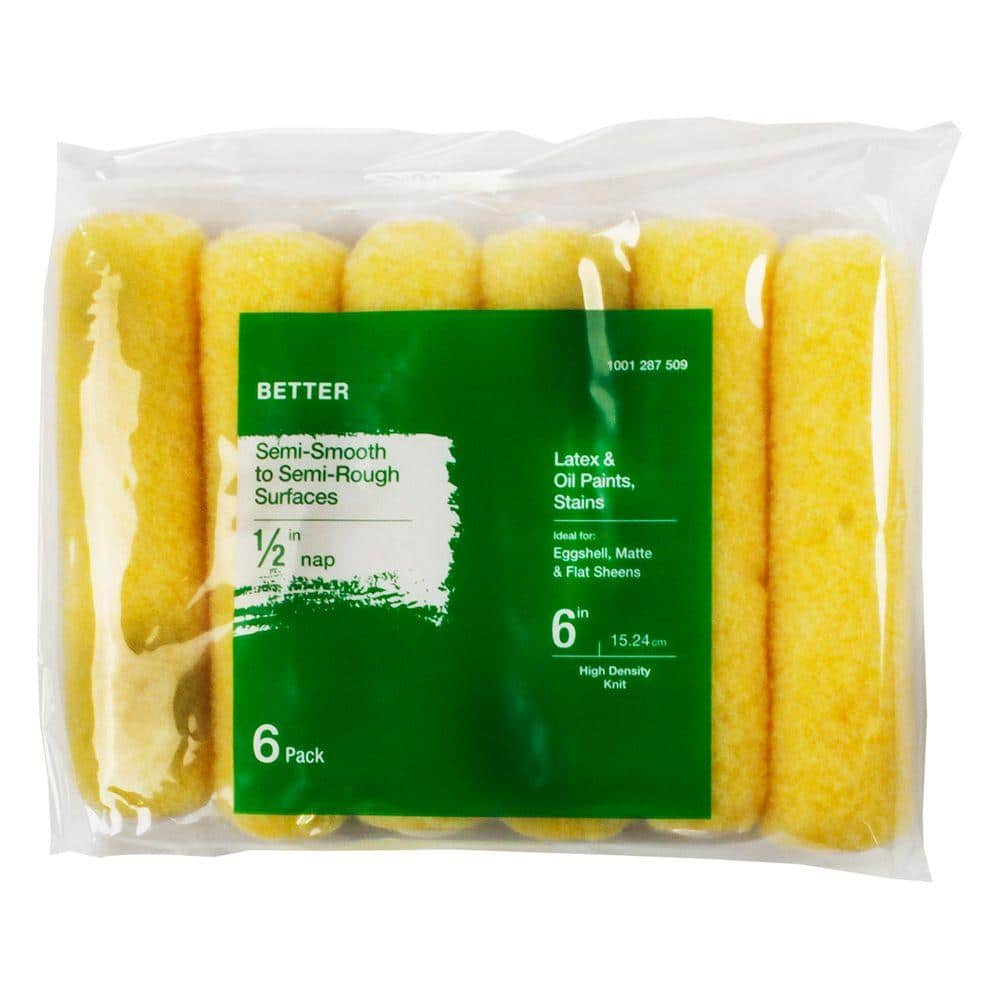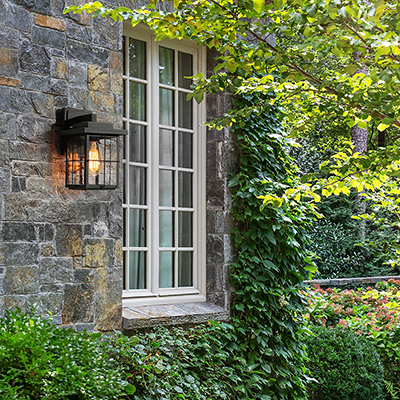How to Paint Interior Doors

Last updated September 7, 2023
Interior doors can receive a lot of use during your daily comings and goings. Painting interior doors is an easy way to improve their appearance and brighten your rooms. This guide reviews how to paint interior doors, whether they’re still attached to the hinges or detached from the door frame, as well as how to prepare interior doors for painting.
Safety Tip: Practice lead paint safety. If the house or surface you're painting was built before 1978, review EPA's renovation, repair and painting program for guidelines.
Table of Contents
Preparing to Paint a Door
Painting an Attached Door
Painting an Unattached Door
Painting a Flat Door
Painting a Panel Door
Painting a Door with Glass or Mirrors
Preparing to Paint a Door
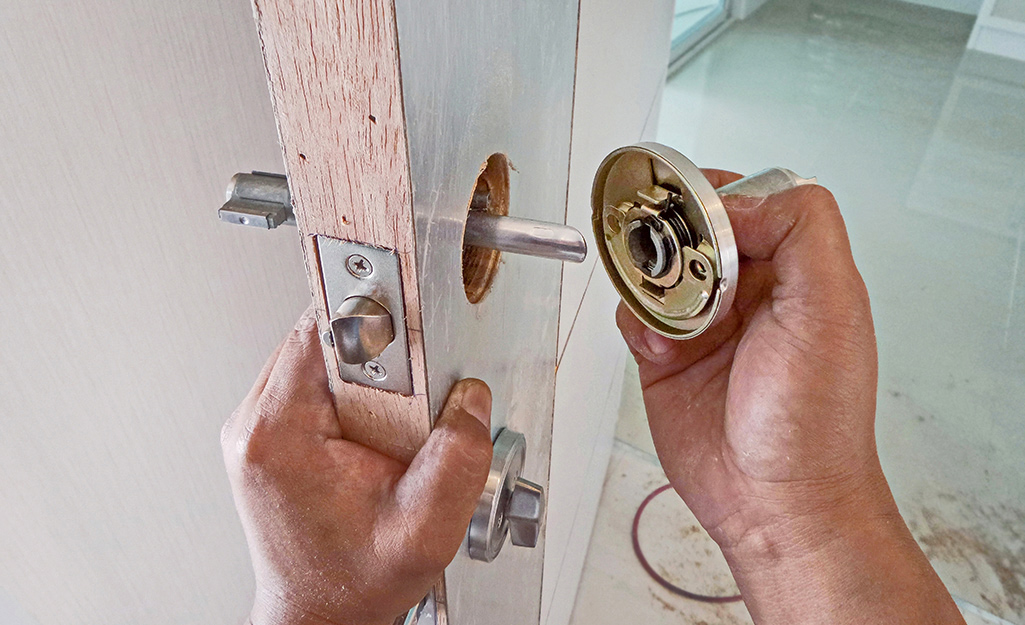
Take the following steps before painting interior doors.
- Remove the door knobs and all other hardware from your interior door to simplify the paint application. If you’re replacing the old hardware, make sure the new hardware will match.
- Choose paint recommended for interior doors, such as types with a durable gloss or semi gloss sheen that makes them easy to clean.
- If possible, paint in a well-ventilated area or use a fan to circulate the air.
- Before painting, clean the door with a degreasing cleaner.
- Fill holes and repair imperfections with sandable filler or spackle.
- Use 120-grit sandpaper to gently sand the door for a smoother surface that will absorb primer or paint more easily.
- After sanding, remove dust from the area before priming or painting.
- Put down drop cloths.
Painting an Attached Door
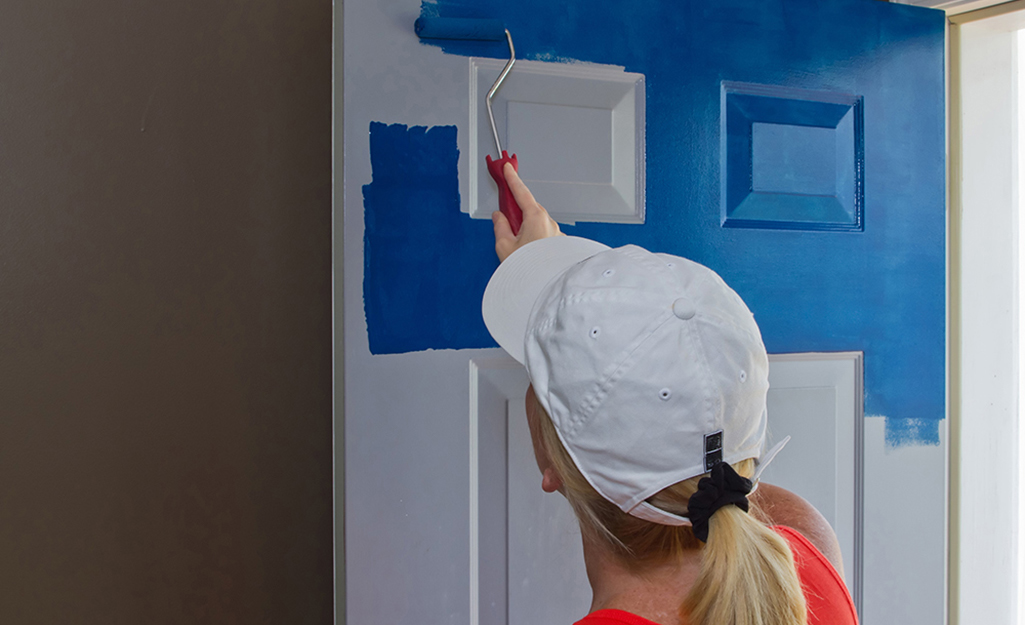
Some interior doors are heavy and challenging to remove, but you can use this method to paint a panel door that remains on its hinges. An advantage of painting attached doors is that you don’t have to wait for one side to dry before painting the other.
- Cover hinges with painter’s tape if you want to keep them free of paint.
- When painting a panel door, a paint brush may be more effective than a roller.
- Begin by applying paint to the inside of the top panels. Smooth out the paint, working with the grain. Coat the recessed areas first and then the faces of the panels.
- If the door has a vertical center stile, paint this next and then blend in the brush marks from the center stile when you paint the horizontal rails.
- Paint the rails, or the horizontal framing members, starting with the top rail and working your way to the bottom.
- Paint the remaining vertical stiles, starting on the left. Feather the brush marks from the rails while they are still wet. Keep the line as straight as possible along the edge where the stiles meet the rails. Brush or roll the edges, but be careful not to get any runs on the face of the door.
- Make sure the door can remain open long enough to fully dry. If a door is closed while still wet, it could stick to the door frame.
Painting an Unattached Door
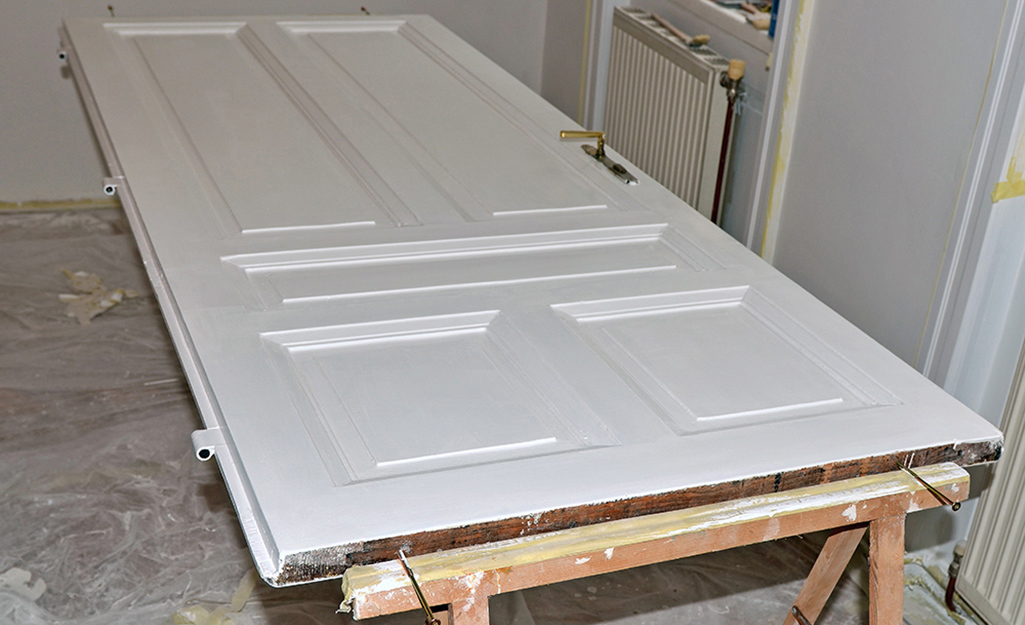
When reviewing how to paint a door, you may find that painting an unattached door, placed flat on a pair of sawhorses, encourages an even coat without drips or runs. This method also makes it easier to paint the edges. You'll need a helper to assist you as you take the door off its hinges.
- To remove the door, wedge a flathead screwdriver or chisel in the joint between the hinge and the top of the hinge pins. Lightly tap the screwdriver with a hammer until the hinge pins come loose. With a helper supporting the weight of the door, remove the pins and carry the door to your chosen location for painting.
- Place the door flat on the sawhorses.
- Begin by painting the edges with a brush.
- When painting a paneled door, begin with the recessed panels, then the horizontal rails and finally the vertical styles.
- Let the door dry completely on one side before flipping it over and painting the opposite side.
- Remount the door after fully dry.
Painting a Flat Door
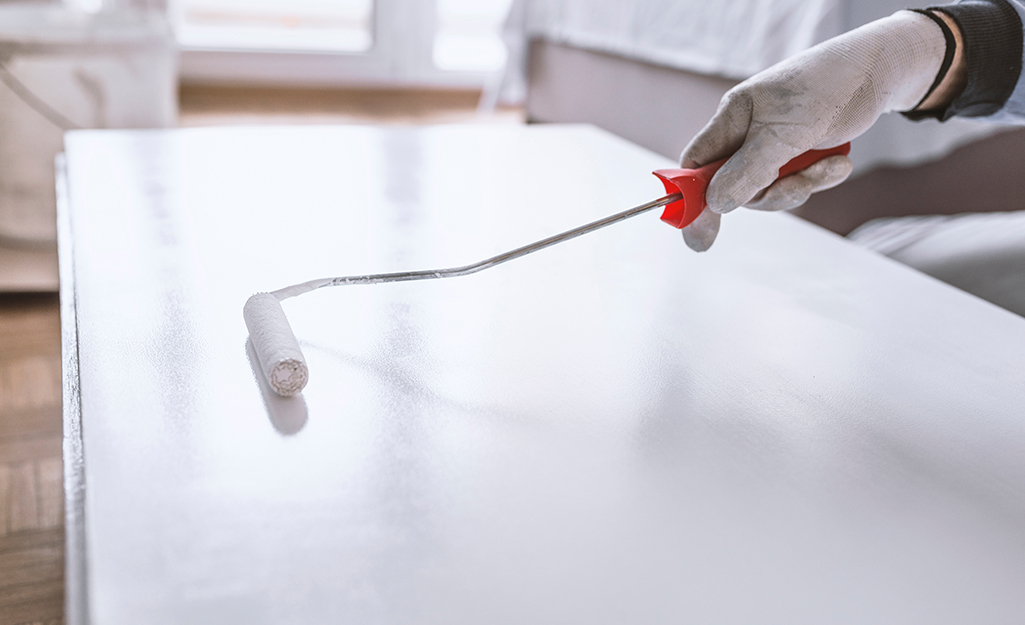
Compared to a panel door, a flat door can be painted relatively quickly with a paint roller. You can also use a brush if that’s your preference.
Add a coat of primer to your door if it's bare wood that’s never been painted, you’re using latex paint over an oil-based paint, or you’re covering a dark color with a much lighter tone.
- Use vertical roller strokes when painting a flat door, or long, smooth brush strokes.
- Finish the edge around the hinges with a small brush.
Painting a Panel Door
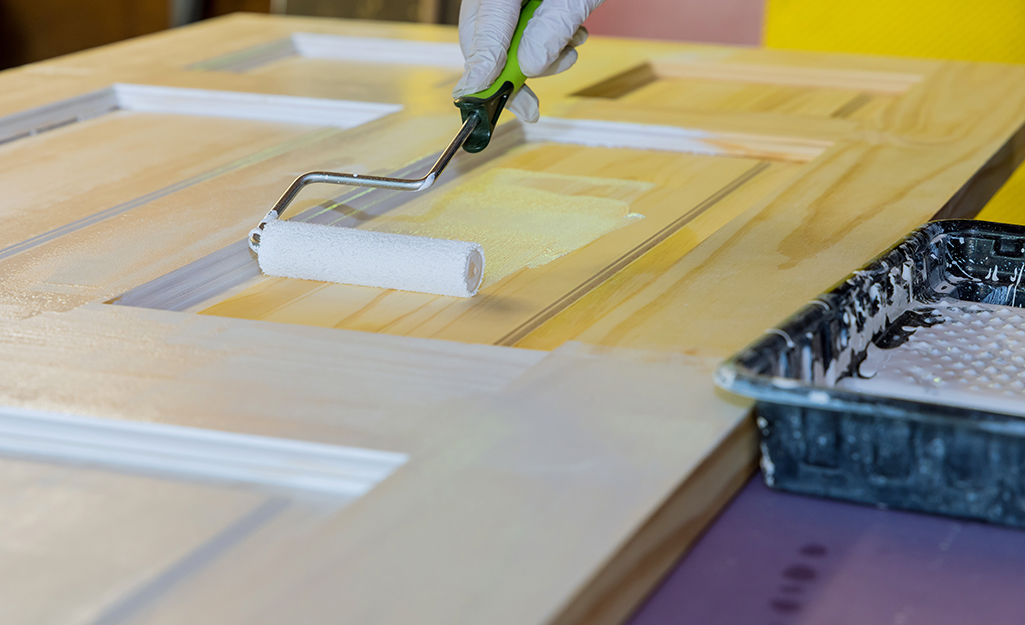
A panel door has panels framed by stiles and rails, thicker than the central panels. These doors are a common style of interior door found in homes across the U.S.
To paint a panel door flawlessly:
- Begin by applying paint to the inside of the top panels. Smooth out the paint working with the grain. Coat the recessed areas first and then the faces of the panels.
- If the door has a vertical center stile, paint this next and blend in the brush marks from the center stile as you work on the horizontal rails.
- Pain the rails, or the horizontal framing pieces, starting with the top rail and working your way to the bottom.
- Next, paint the remaining vertical stiles, starting on the left. Feather the brush marks from the rails while they’re still wet. Keep the line as straight as possible along the edge.
- Brush or roll the edges, avoiding any runs on the face of the door.
Painting a Door with Glass or Mirrors
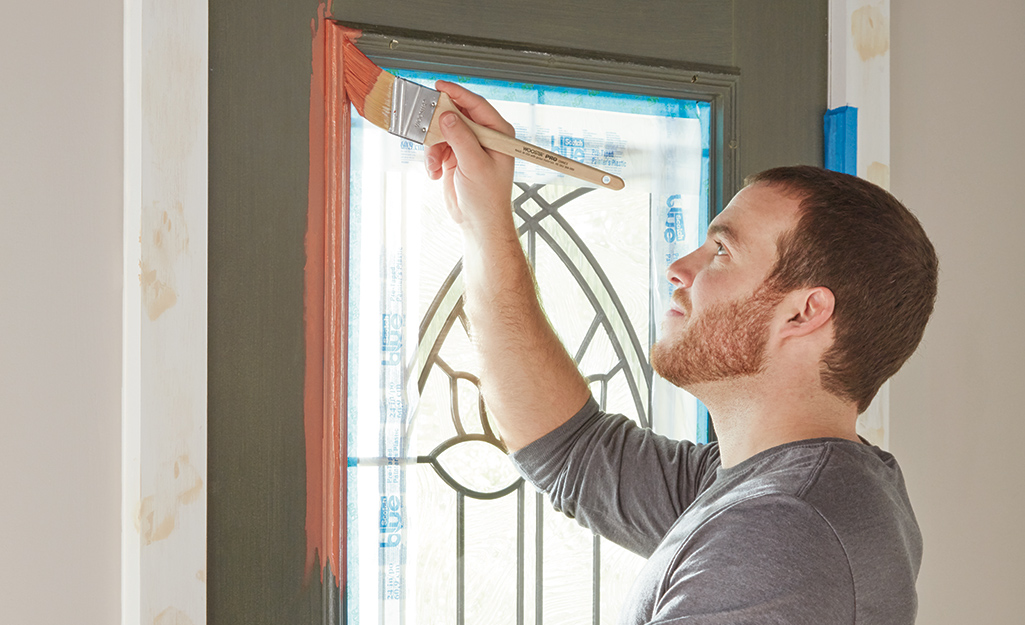
Doors with inlaid mirrors or glass panels can take more time to paint without messy edges or a lot of taping, scraping and detail work. Use these tips to make painting a door with mirrors or glass easier:
- Use a masking liquid or tape sheets to cover all the glass in the door. This is faster than using strips of painter’s tape and usually covers the area better.
- Allow the masking liquid to dry per the manufacturer's instructions.
- Paint the door surface with a brush instead of rollers for more precise application.
- Allow the paint to dry completely. Gently run a utility blade or box cutter around the edges of the dried masking liquid or tape sheets
- Remove the masking liquid residue or tape sheets.
- Use a small scraper to gently remove any messy edges or paint drips from the glass surface
- Clean the glass panels with your preferred glass cleaner.
Painting a Bi-Fold Door
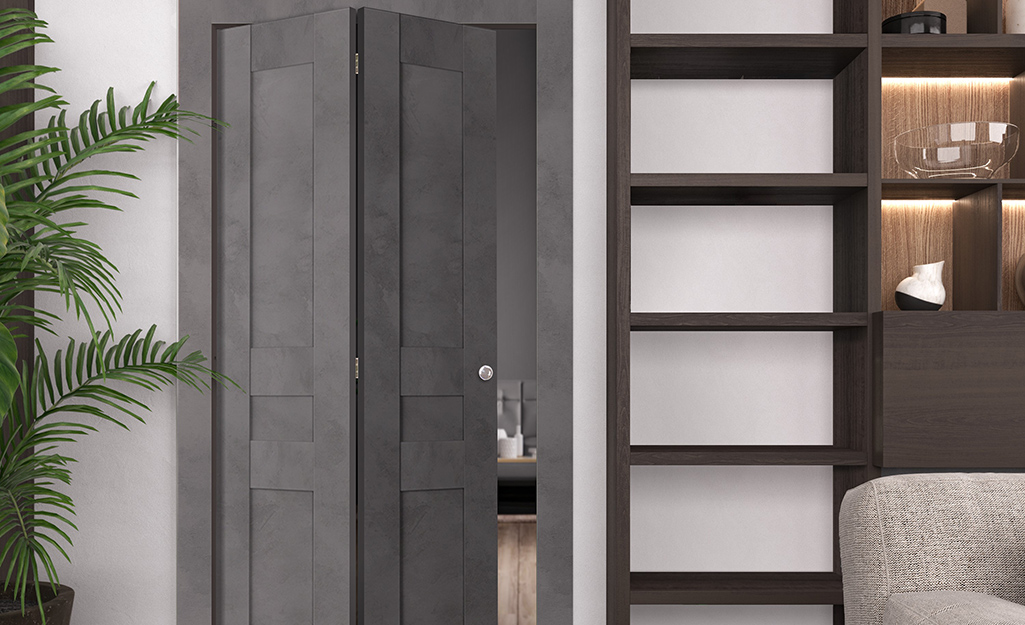
Bifold doors are most often seen on closets. They have handles you pull towards you and fold at their center, moving towards the sides of the door frame on a track. Best practices for painting bifold doors include:
- Open your bifold doors slightly so that both panels are still accessible and mostly forward-facing, but the edges of the two panels are no longer touching.
- Start at the top of the bifold door and work your way downward, finishing with the edges.
- Paint with the wood grain, following the natural flow of the door surface.
- Try not to overload your brush with paint to prevent dripping, especially on the hard-to-reach edges of the bifold door.
Tips for Painting an Interior Door
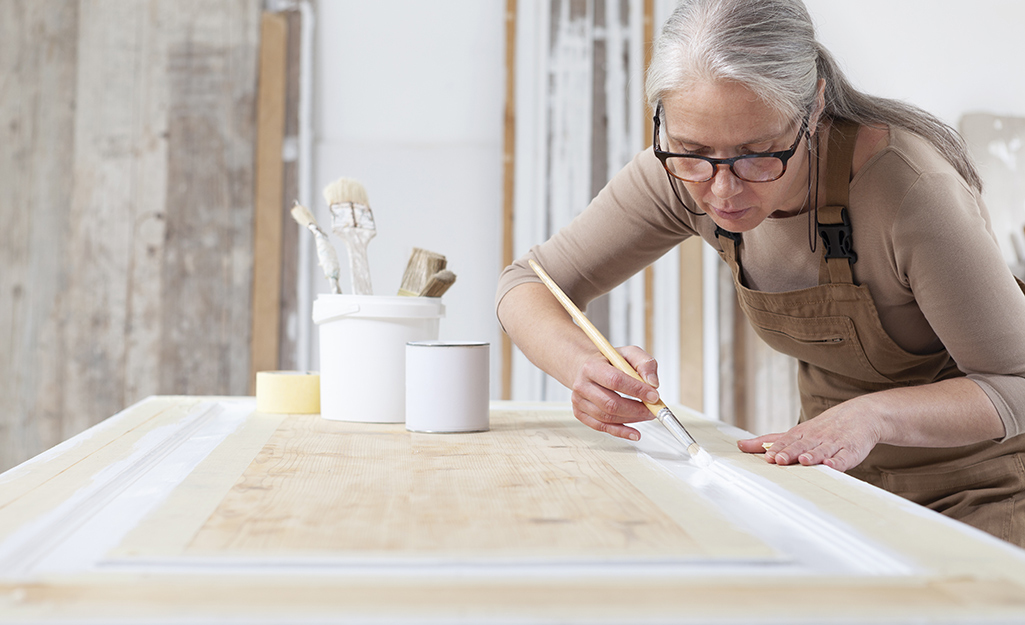
Consider the following tips when painting an interior door.
- Choose whether you need to prime the door before painting. If the door was originally painted with latex paint, priming should be unnecessary. If it was painted with oil-based paint, prime before using a latex-based paint.
- When painting wood doors, make sure all six sides of your door are covered to protect it from rotting, cracking and expansion.
- If you leave the bottom edge unpainted, cover it with a clear wood sealer to prevent moisture from entering the wood. Any water will cause the wood to warp and swell, resulting in a door that won't close properly.
- If a second coat of paint is needed, sand the door lightly and then wipe it with a tack cloth before repainting.
- Paint the trim and door frame in matching or complementary paint colors.
When you know how to paint interior doors, you can refresh your home’s appearance. Painted doors can enhance a room’s overall look no matter what your decor style.
Ready to get the supplies you need to paint your home’s interior doors? Use The Home Depot Mobile App to locate products and check inventory. We’ll take you to the exact aisle and bay.

